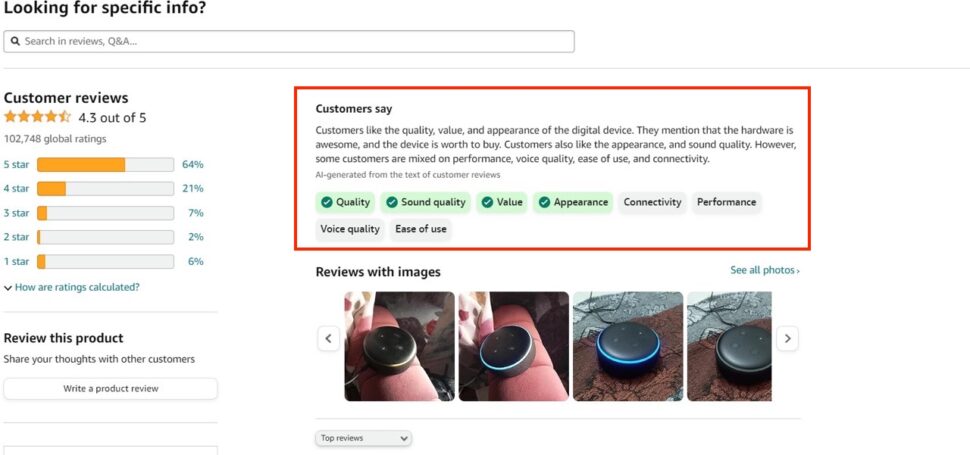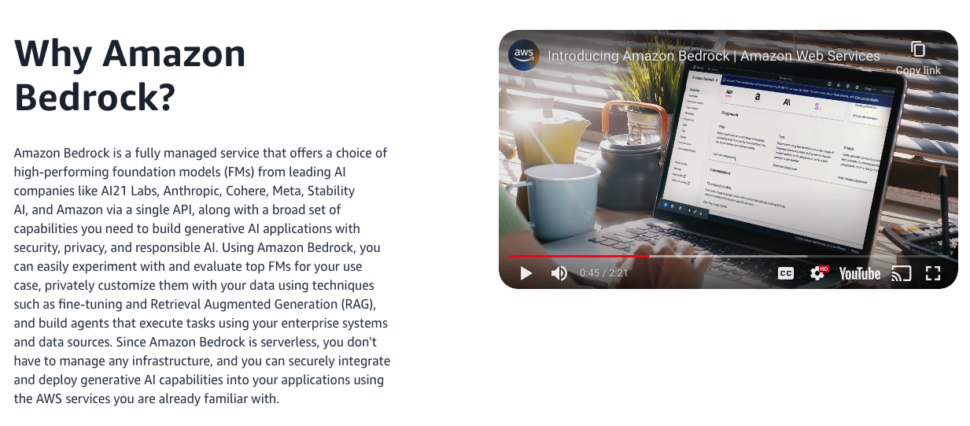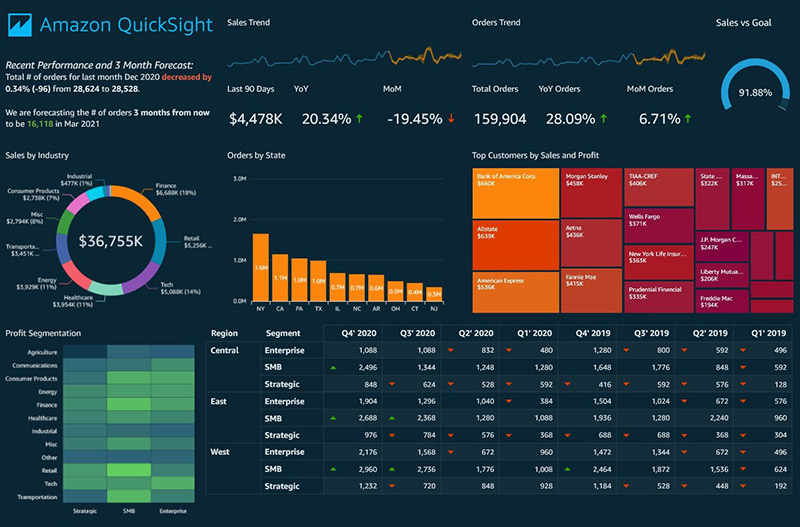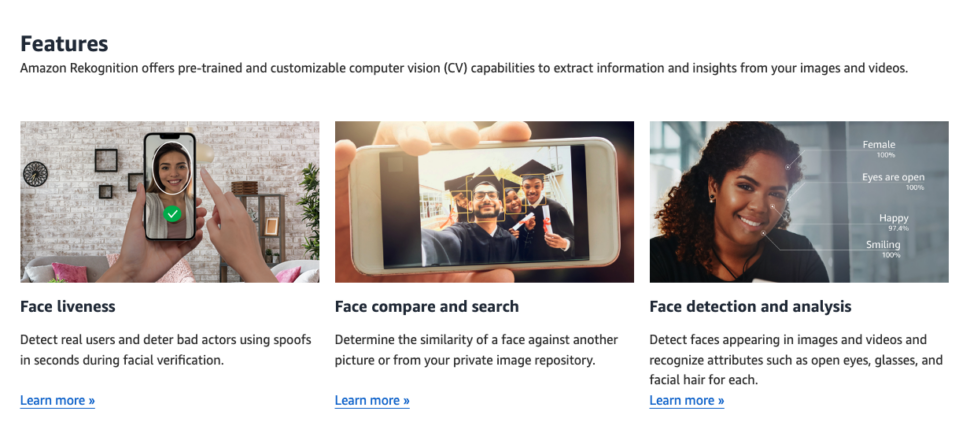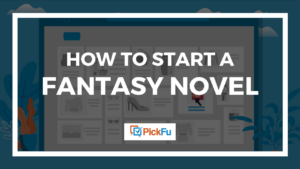There’s no better time than the present to learn about generative artificial intelligence (AI) tools in the e-commerce space, especially Amazon.
In fact, research firm Gartner discovered that as of the third quarter of 2023, 45% of businesses are actively experimenting with generative AI. And 10% of organizations have already started building solutions.
This growing trend reinforces the importance of incorporating generative AI tools – especially in e-commerce. These tools empower you to scale your online store fast using text and image generation features.
But what are the best AI generative tools, and how should you use them?
We’ll answer these questions and help you pick the best AI platforms to boost your efficiency and sales. Start creating effective product listings, generate product images, or even design an online store with “gen” AI. Let’s go!
Today, AI is integrated with almost every aspect of e-commerce and online selling, including Amazon.
Amazon has already announced it will add AI text generation features to optimize seller listings, saving time and effort. And if you’re using Amazon Web Services (AWS), you’ll find several gen AI applications and models on your dashboard.
Here are a few interesting ways Amazon is integrating AI with its offerings:
- Improved home assistant conversations: Alexa is boosting its conversation skills, answering questions by considering context and answering “intuitively” in real time. This means better quality answers and information for Alexa users.
- Optimized product listings: generative AI will improve your Amazon product listings – all you have to do is enter a few keywords and AI will flesh out product descriptions, features, and other detailed content that guides customers toward purchases.
- Streamlined advertisements: create visually appealing Amazon ads faster. Amazon is rolling out image generation capacities (in beta) to increase conversions by adding lifestyle backgrounds to product images.
- Review highlights: AI will summarize sentiments and critical points from customer reviews into a concise paragraph. You’ll quickly learn if you’re meeting your customers’ needs.
- Contactless payment: Amazon One is a feature that enables payments and identity verification using palm verification. The model was trained with AI and the goal is to enable a more effortless and secure payment experience.
This is only a fraction of the AI capabilities that Amazon is integrating into its seller platform and AWS. It now supports inventory management, predictive analytics, business intelligence, and more.
Now let’s explore the top Amazon Gen AI tools you should know about.
7 Amazon generative AI tools to grow your business
You’re likely hoping to learn about Amazon’s own AI tools that generate text and images to optimize your listings.
You might also be looking for other companies’ AI tools that you can leverage to grow your Amazon store.
To answer the first need, we’ll unravel the many tools AWS offers today. Text and image generation capabilities don’t stand alone, but are part of AWS’s services. Developments in this area are new and complex, but we’ll aim to break down what AWS has to offer in an easy to understand way.
For the second need, we’ll also explore platforms outside of Amazon (both free and paid) that can help you scale your selling operation with text and image AI generation.
1. Amazon Bedrock
Amazon Bedrock is a recent and powerful addition to AWS’s AI services, geared to help you build great applications with generative AI. This means that you can give simple commands and create powerful apps to generate content or even respond to customers automatically.
Bedrock works with foundational models (FM) like Stable Diffusion to generate images, Claude to generate text and conversations, and Titan to generate both text and images, along with other FMs.
These advanced machine-learning algorithms will help you create better customer experiences through content.
Here are Bedrock’s use cases:
- Text generation: create original blog posts, social media posts, and other content. You could even build your own AI writing assistant!
- Image generation: generate ads for images, your website, presentations, and other needs.
- Text summarization: get instant summaries of long documents like books and research papers.
- Virtual assistants: Build helpful assistants like chatbots to take user requests and fulfill them by breaking down tasks and collecting information.
- Text and image search: find and synthesize data from text and images to recommend products and answer questions.
While these features are game-changers for boosting content creation, they are hard to use. Working with Bedrock is best for developers and technically proficient users who know their way around AWS.
However, if you already use AWS, you can leverage Bedrock and integrate it with your e-commerce applications. This AI service is constantly learning, meaning it will evolve as it trains with your data and commands – keeping you at the top of your game.
2. Amazon QuickSight
Amazon QuickSight is an AWS service focused on business intelligence (BI).
It works its magic by transforming data into visual reports with the power of AI. This is an essential visual analytics tool if you want to quickly understand and leverage your e-commerce data.
QuickSight will process large data sets and generate insights via graphs and images on your dashboard. It streamlines data analysis and visual report generation to present data quickly, making it accessible to everyone in your business.
It’s serverless, so you don’t have to manage infrastructure. You can scale up or down based on your current needs and only pay for what you use. This will reduce costs to store, process, and analyze data.
With Amazon QuickSight, you can access your BI information from anywhere and embed it into your apps, portals, and websites. This means you can access AI, data analytics, and data visualization across all your platforms. You’re empowered to share information with your team, stakeholders, or even customers – something that’s especially useful in the B2B sector.
What else can you do with QuickSight? How about detecting anomalies or forecasting business outcomes and product demand? Try this Amazon AI gen tool to make better decisions for your business.
3. Amazon Rekognition
Amazon Rekognition is another high-quality AI service that allows you to incorporate image and video analysis into your apps and platforms.
Rekognition doesn’t generate images and visuals, but its machine-learning models can identify various objects in images and videos.
This is useful for e-commerce businesses that want to detect inappropriate content, duplicates, and stolen visual assets. More use cases include automating user verification and identification.
Essentially, Rekognition is a computer vision tool. Its pre-trained algorithms help with detecting celebrities in images, detecting attributes like emotions, age, gender, and so on, as well as text detection and more.
Work with this AI tool to automate moderating product images and user-created content. You can also use it to boost search results by helping customers find products with pictures only.
4. Amazon Comprehend
Amazon Comprehend uses natural language processing (NLP) services to extract useful information from documents.
Comprehend, available on AWS, provides APIs to interact with software applications, enabling you to analyze text and understand sentiment, key phrases, language, entities, and more.
It’s useful when you want to gather valuable insights from unstructured data, such as customer emails, social media posts, and product reviews. You save countless hours of manual research or guesswork trying to figure out customer pain points and preferences.
Like other generative AI applications from Amazon, Comprehend constantly learns and improves as it trains with your data to produce accurate and relevant information. Use this tool to improve everything from your content marketing to product development.
5. Amazon Lex
Generative AI is powerful for driving conversations with your customers using chatbots.
Want AI to handle repetitive customer queries and answer simple questions?
Amazon’s Lex will have the AI tools and advancements you need in your AWS dashboard.
Lex has an easy-to-use platform for creating your own sophisticated natural language chatbots. You’ll leverage large language models (LLMs) to understand and respond to user queries effectively.
Let’s break down Lex’s capabilities:
- Use automatic speech recognition to convert spoken language into written text.
- Create voice chatbots and conversational bots on any platform, such as your app or e-commerce website.
- Leverage natural language capabilities to understand and recognize user intent and to provide helpful resolutions via automated chats.
- Continue learning and adapting to your evolving processes and business terminologies.
Since Lex is part of AWS’s AI services, you can seamlessly integrate it with other tools mentioned here to create powerful applications. Doing this will help you enhance customer engagement, service, and satisfaction while boosting your productivity.
Before we move onto third party AI tools, here are a few other Amazon AI tools:
- Amazon SageMaker: a fully managed service that allows developers and data scientists to quickly build, train, and deploy machine learning models. It’s useful for predictive analytics, marketing optimization, and other key business activities. Llama 2 by Meta is available on Sagemaker and is useful for text generation, translations, and conversational tasks.
- Codewhisperer: this is a generative AI tool that recommends code in real time. It can suggest snippets and even full functions. What’s impressive is that Amazon’s Codewhisperer aims to prevent plagiarism and analyzes code to prevent issues early in the coding stage.
- Amazon Forecast: this machine learning tool uses a business’s historical data and related data on holidays, marketing campaigns and more to generate accurate forecasts. These forecasts help predict demand, optimize inventory management, and boost customer satisfaction.
These are some of Amazon’s most important AI services related to content generation and the e-commerce space. They benefit from leveraging Amazon Elastic Compute Cloud (Amazon EC2) to change capacity so you can scale easily or reduce your usage of AWS.
The pricing for these services is flexible as well – you pay based on how much you use.
The tools shared so far are best suited for large e-commerce or enterprise B2B businesses, since they go beyond simple image or text generation. Next, we’ll cover a couple other tools that any e-commerce brand can use to optimize their product listings.
6. ChatGPT by OpenAI
So far, we’ve covered Amazon’s native gen AI tools. But if you aren’t familiar with AWS or are looking for free and useful generative tools from other businesses, we’ve got that covered too. Let’s start with ChatGPT.
Developed by OpenAI, ChatGPT is the most widely known generative AI tool to produce human-like text. It’s likely you’ve already used its AI capabilities to help you brainstorm or create marketing content.
ChatGPT is great for boosting sales and marketing efforts for both startups and established businesses in the following ways:
- Quickly generate clear, engaging product descriptions for your listings
- Create promotional content like blog posts, social media posts, and video scripts
You can even use ChatGPT’s paid version to create images right from its chat interface. It handles content creation for you, freeing up your time to focus on other areas of your business.
7. Midjourney
Midjourney is an exciting image generation platform built by an independent lab.
This popular and dynamic AI generator is known for creating spectacular images with text prompts. It’s based on the powerful GPT framework and offers many ways to boost product marketing for e-commerce businesses.
For example, you could generate eye-catching visuals for new product launches or sales promotions with just a few well-crafted text prompts.
Get started by signing up on Midjourney’s Discord platform. It’s no longer free, however, and you have to opt for a monthly subscription to use it.
There are many ways to apply Midjourney’s image-generation capacities, including:
- Using ChatGPT for prompts and entering them into Midjourney to help design your website. Create layouts, mockups, hero images, and more to build a high-converting online store or site.
- Generating product mockups, prototypes, or final images to display on your Amazon product listing or online store.
- Creating powerful ad content to drive engagement and conversions. You could even use the AI-generated images to create click-worthy banner ads, social media posts, and other promotional materials.
YouTube is a great resource for learning how to create product images and entire websites using AI.
While Amazon’s gen AI tools and other mainstream applications like ChatGPT and Midjourney are revolutionizing the way businesses approach content and image creation, it remains critical to recognize the importance of a human touch.
Let’s explore how to validate your AI-generated material with real people to succeed in your e-commerce efforts.
How to test AI-generated content and tools with PickFu
How do you decide on the best AI tool (or AI-generated content) to boost your Amazon listings and sales?
The answer is to test your options against your target audience – simply ask your potential buyers how they feel about your AI-generated product mockups or descriptions.
You may think you’ll need to plan a survey and go through a long process to get feedback, but that’s not the case with PickFu.
We’re in the business of helping Amazon sellers and e-commerce professionals get rapid feedback from real users. We’ve helped hundreds of clients make fast improvements to their listings by running polls against a built-in panel of their target audience – results come back in just a few hours or less.
When using AI generative tools, we suggest running poll to learn how audiences will respond to the content. For example, we learned that people preferred content from DALL-E over Stable Diffusion and liked Midjourney over DALL-E or even Midjourney over Stable Diffusion.
AI can help you quickly come up with ideas and iterate on content for your product listings – but you need human input (from your ideal customers) to make sure that content is on the right track.
Accelerate with AI, validate with humans
There are many powerful gen AI tools by Amazon and other businesses that can create content, automate conversations, forecast business outcomes, and visualize data.
These tools are essential parts of your business growth kit and, when used correctly, will help you build better listings, descriptions, and even better products for your customers.
But make sure you validate your AI content with human input. This is where PickFu shines – sign up for free and launch a quick poll to ask real consumers how they feel about your products and content.
FAQs
Does Amazon have a generative AI tool?
Yes, Amazon offers various generative AI tools like Amazon Lex, Bedrock, Codewhisperer, and many more. These tools provide businesses with intelligent and efficient solutions for text generation, data processing, forecasting, and everything an online business needs to succeed.
What type of data can be used to train generative AI?
You can train generative AI with various data sources, including text, images, and audio. The type of data you use will depend on the specific AI tool and your intended purpose. For example, ChatGPT is trained on large amounts of text data, while Midjourney uses images as its primary training data source.

